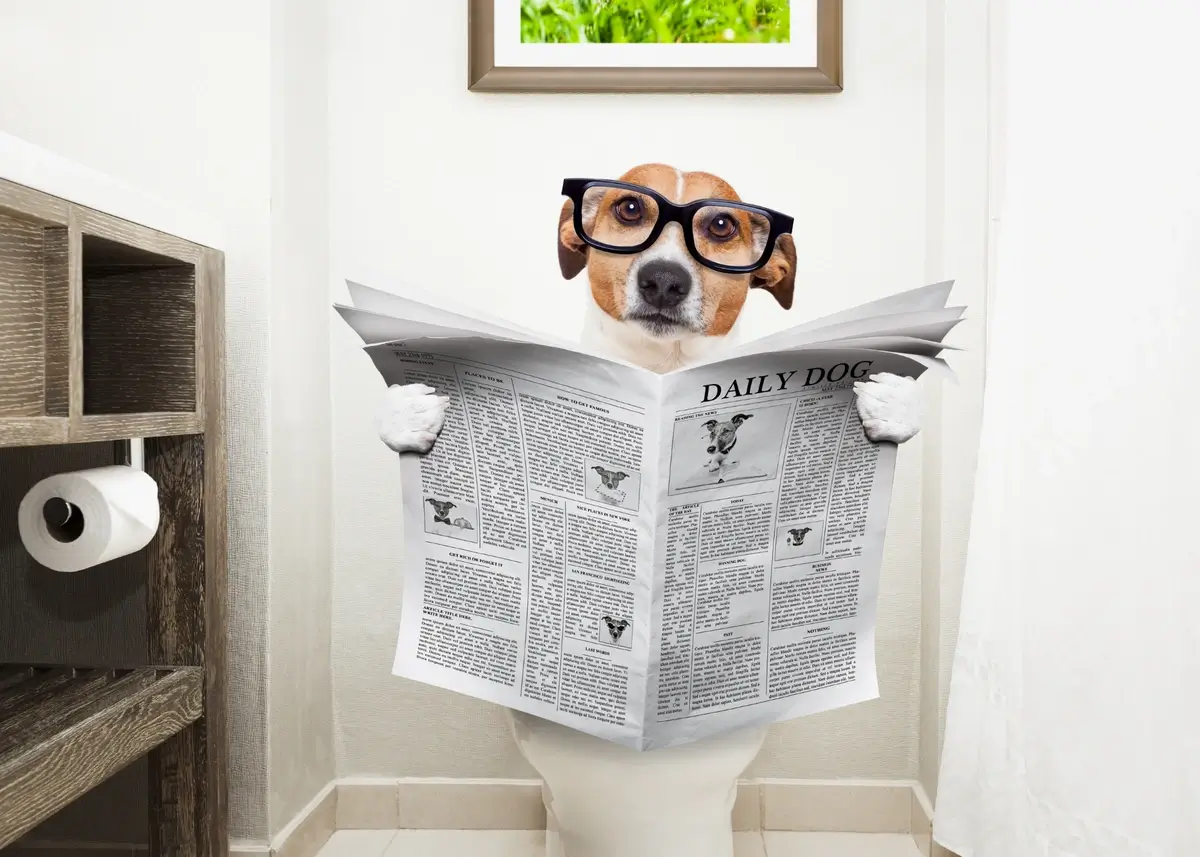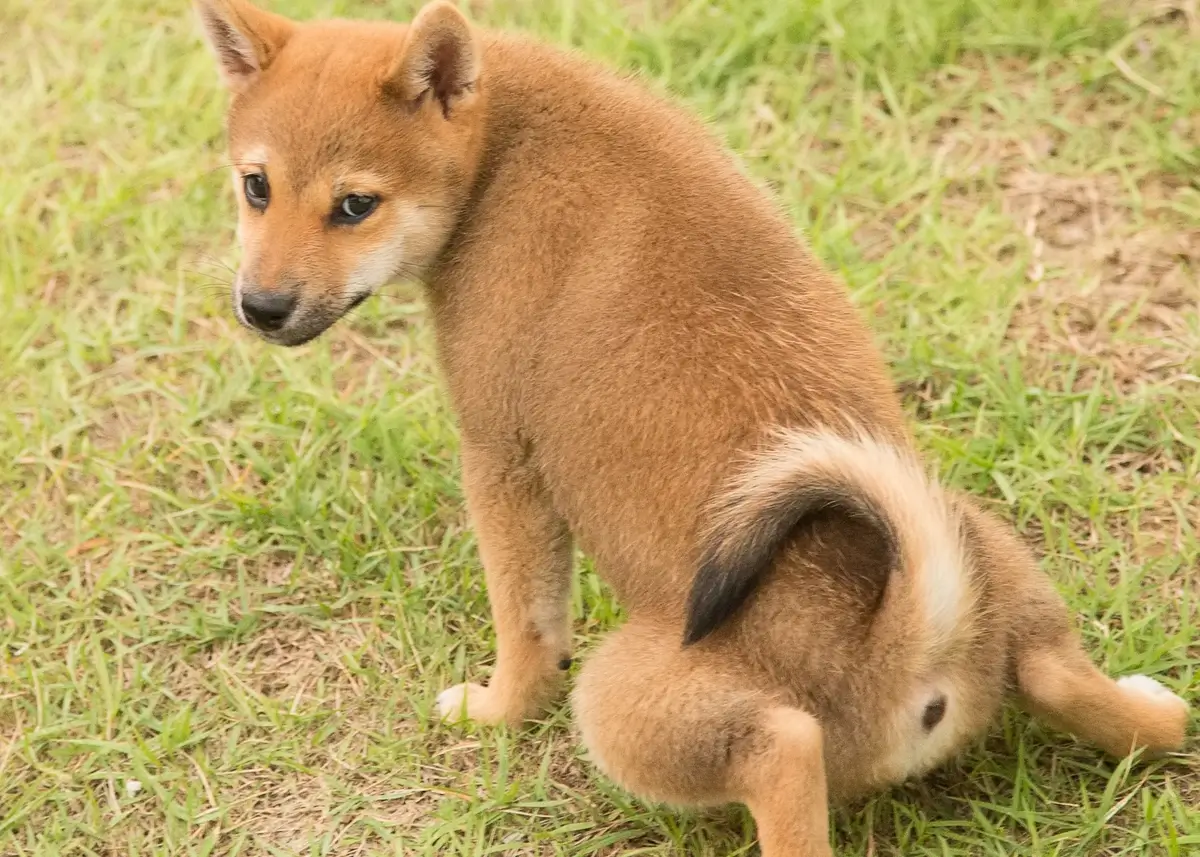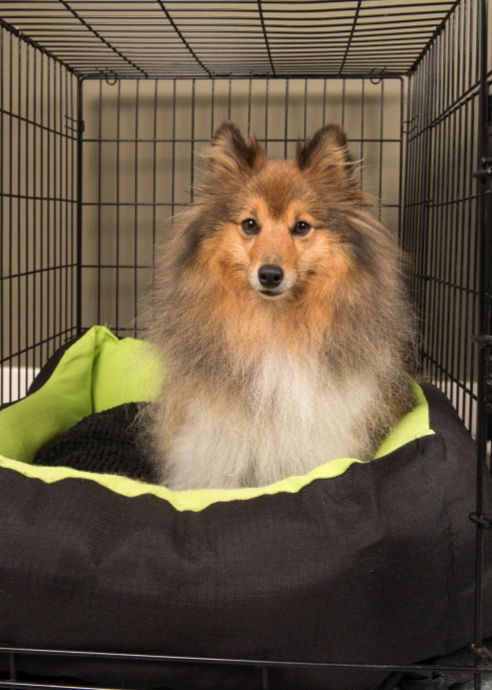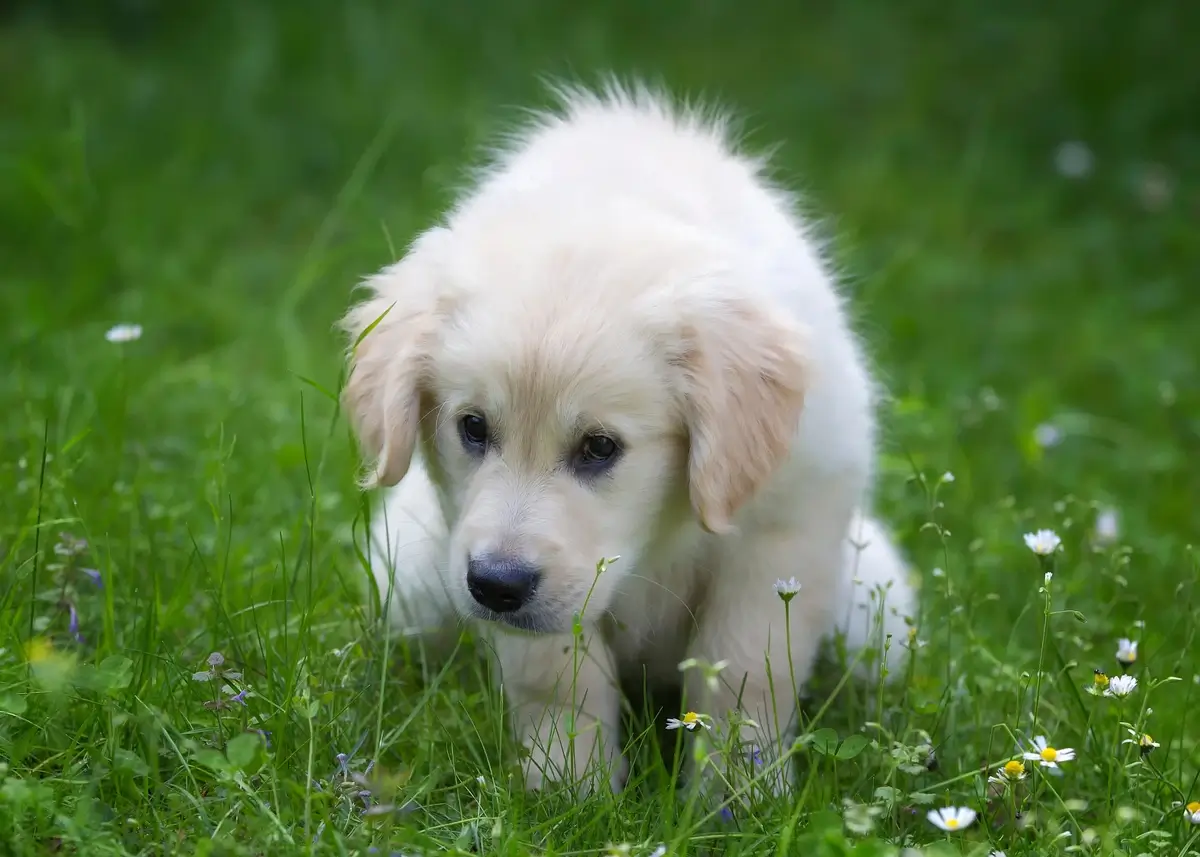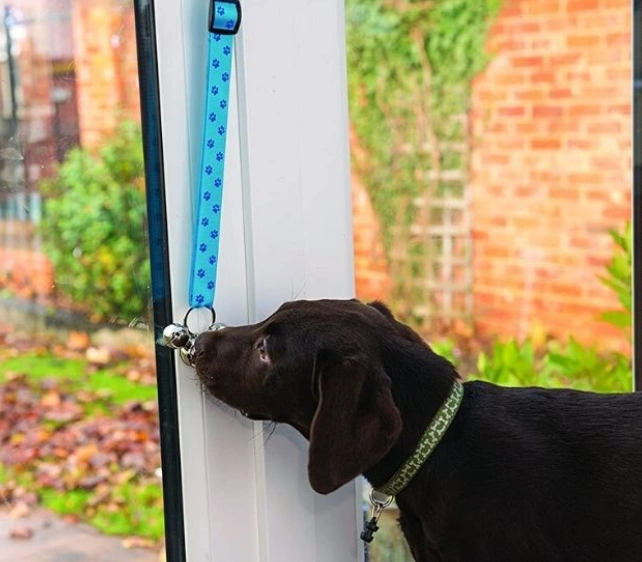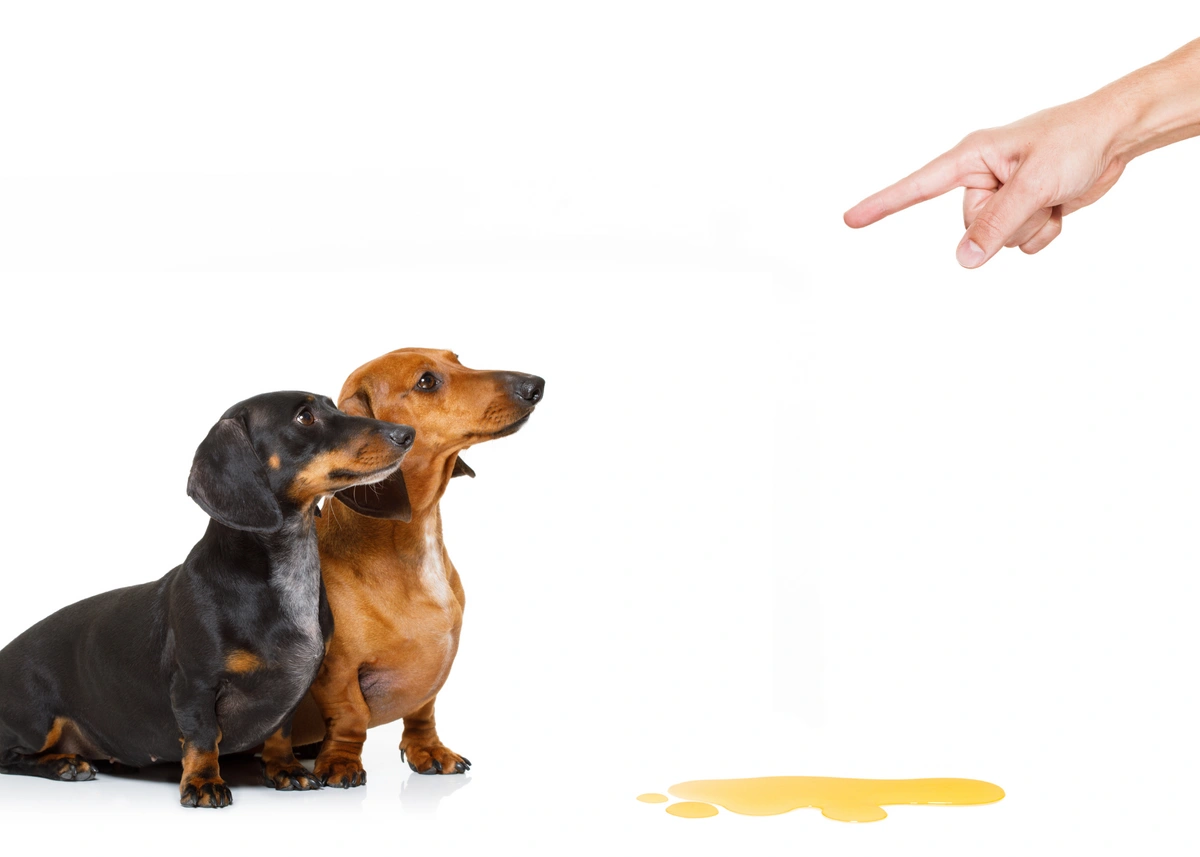Since you’ve brought home your new puppy, your routine seems to be going well. You’ve done your best to supervise your puppy, but Nature calls. You are gone for just a few minutes. When you turn the corner, you see your puppy wagging its tail looking pleased with itself – and something on the floor.
You start thinking to yourself, “Is that a Tootsie roll on the floor? But Halloween was months ago. I looked under the couch when preparing my home for a new puppy. I’ve tried to hide anything that a puppy shouldn’t get into. I wonder what that could be – OOOOH NOOOO! NOT THAT!”
We all know it was not a Tootsie roll. You may have read how to potty train your new puppy before getting your puppy, but you may want to learn about different puppy potty training methods to see if there is one that really works for you now that you’ve met your puppy.
Letting your puppy just “figure it out” is not a method we recommend at all! Your puppy will need to be taught where to eliminate. You know you need to potty train your puppy, but how do you pick a method? Have your puppy potty trained quickly by exploring tried-and-true puppy potty training techniques to see which one is right for you.
Why You Should Potty Train Your Puppy Right Away
Don’t hesitate to begin potty training your puppy when they arrive at your house – the best time was yesterday! Potty training your puppy is of utmost importance for several reasons:
- It promotes cleanliness and hygiene in your home, ensuring a healthy and comfortable living environment for both you and your furry companion.
- Proper potty training helps prevent accidents and eliminates the need for constant cleanup.
- Potty training establishes a routine and structure for your puppy, teaching them valuable life skills and boundaries.
- Potty training also strengthens the bond between you and your puppy, as it involves consistent communication, positive reinforcement, and trust-building exercises.
By instilling good potty habits early on, you are setting your puppy up for a lifetime of proper elimination habits, reducing stress and enhancing its overall well-being.
How Long Will It Take to House Train My Puppy?
Puppies learn at different rates, so we can’t tell you exactly how long it will take to housebreak your puppy. Some breeds will be extremely easy to train and will get the hang of things quickly, while others will require more work. Here are some factors that will affect how quickly your puppy will be potty trained.
Physiological differences
A small breed will have a higher metabolism and a tiny bladder, so they will need to eliminate much more than a large breed dog with a bigger bladder. A Shih Tzu puppy will need more frequent trips outside than a Great Dane puppy. Your puppy’s size may also help you determine the type of training method you choose, like trying a paper method for a smaller puppy over a bell method.
Cleanliness threshold
Certain breeds are known to be cleaner than others, preferring to eliminate far away from their usual spots. For example, Shiba Inu puppies have habits just like cats and will constantly keep themselves neat and clean, so they may not want to eliminate in their crate or special area. In contrast, some breeds do not care about being as tidy and will eliminate whenever (and wherever) they need to go.
Top of the class
While we love all our puppies, let’s all admit that some breeds are noticeably smarter than others, while others may take more time to catch on and learn what to do. And if you have a breed that’s known to be one of the smartest dog breeds, don’t be frustrated if yours does not follow every trait of the breed.
Eager to please…or not
If you have a breed that’s very eager to please its owners, such as Labrador Retriever puppies or Golden Retriever puppies, you may have an easier time since they want to do what makes you happy. However, other breeds can be stubborn and are not bothered by you offering a tasty treat, instead focusing on their own puppy agendas. For these puppies, you’ll need to find out what motivates them and have lots of patience!
4 Methods to Potty Train Your Puppy
1. Crate Training Method
Selecting a dog crate for your puppy is an important decision that can have a significant impact on your dog's safety and well-being. Whether you choose a permanent crate made of metal wires or a travel crate made of easy-to-clean plastic, your puppy will appreciate having a secure and comfortable space to call its own.
A crate can also be an excellent choice for potty training your puppy. Some benefits of crate training your puppy include having a calm space to call their own, providing a secure place to sleep or hang out while you are gone, and potty training your puppy. The idea is your puppy will not want to soil itself where it spends a significant amount of time in close quarters. Use the crate to control their access to the house, gradually increasing the time they spend outside the crate as they demonstrate good potty habits.
Paper Training Method
Paper training is a method used to housebreak a puppy by teaching them to eliminate on a designated area covered with newspaper or training pads. You may want to paper train your puppy if you have a small breed or limited access to the outside. Here's a step-by-step guide on how to potty paper train your puppy:
- Choose a designated area: Select a small, easily accessible area in your home where you can place the newspapers or training pads. It should be away from their sleeping and eating areas. Try to make sure it’s on a hard, easy-to-clean surface!
- Introduce your puppy to the area: Encourage your puppy to explore the designated area by placing them on the newspapers or training pads regularly, especially after meals, naps, and playtime.
- Encourage elimination on the papers: When you observe signs that your puppy needs to eliminate (sniffing, circling, or squatting), gently place them on the papers and use a cue word or phrase, such as "go potty" or "do your business."
- Reinforce and reward: When your puppy eliminates on the papers, immediately praise and reward them with treats or verbal praise. Positive reinforcement helps them associate the behavior with positive outcomes.
- Gradual transition: Over time, start reducing the size of the area covered with newspapers or training pads, encouraging your puppy to eliminate on a smaller target area. Then gradually transition them to eliminating outdoors by moving a piece of the soiled paper outside. This helps them associate the scent with the desired elimination area.
- Consistency and supervision: Maintain a consistent schedule for potty breaks and closely supervise your puppy to prevent accidents. Gradually reduce the reliance on papers and encourage outdoor elimination.
3. Outdoor Training Method
If you have direct access to the outdoors, you may want to skip potty pads and go straight for the outdoor puppy potty training method. Establishing a routine is extremely important for the outdoor method. Take your puppy outside immediately after meals, naps, and playtime to enforce a schedule. Likewise, you will need to have lots of patience because you may be walking them around waiting for them to do their business for quite some time while they get the hang of it.
Choose a designated spot in the yard where you want your puppy to consistently eliminate. A corner far away from activity and as distraction-free as possible will be a great spot. Keep in mind that a puppy’s urine can affect grass, so you may want to purchase some puppy-safe urine neutralizer grass products or choose another porous surface like a pebble garden. You can also purchase a stake where you want them to eliminate.
When you take your puppy outside, introduce verbal cues just like in the other potty training methods. Pick a phrase you can use for the rest of your puppy’s life that you don’t mind repeating!
Immediately reward and praise your puppy when they eliminate. Keep it light and have some delicious treats handy, and give lots of praise.
Outdoor training can be a learning experience for you as well. You will get really good at learning your puppy’s cues for when he or she is about to go to the bathroom.
Always be prepared, even on your own property. Carry biodegradable waste bags and dispose of them in the proper location. You may even want to carry a pooper scooper if you don’t like bending over. Never leave your puppy’s waste on the sidewalk or in someone else’s yard!
4. Bell Training Method
Not only is it a fun party trick, but it’s also practical to teach puppy potty training with the bell method when they need to go outside. This method is great if you have direct access to the outside, but you can also use it if you live in an apartment or condo.
First, find a bell that you don’t mind hearing ring frequently because you’re going to hear it a lot! Hang it on or near the door you’ll use the most where your puppy can’t tear it out of the wall or mess up the door when ringing it. Some people also use a buzzer or a talking word button, but we’ll stick with a bell for now since the concept is the same.
Get your puppy used to the noise by giving them treats when you shake the bell. This will teach your puppy that the bell is a positive thing and isn’t threatening. Your puppy will begin to associate the bell with treats, which is what you want!
Next, ring the bell every time you take your puppy outside. If you do this enough times, your puppy will start to ring the bell itself because it’s made the association that the bell means potty time. Always give lavish praise and lots of treats to solidify the association until your puppy is reliably signaling to you their need to go outside and potty.
Tips for All Puppy House Training Methods
Regardless of which method you use, it’s important to have patience! You may experience some setbacks after a few weeks of progress. That’s totally normal! The key is to be consistent. Set a routine and stick to it. It’s okay to re-evaluate your routine if something isn’t quite working, but continue to be consistent.
Make sure all of your puppy’s needs are met. When you get into a solid routine, you’ll be teaching your puppy what to expect with eating, playing, and eliminating. If you don’t provide consistent feeding times and plenty of water, it will throw off their natural urges. Neglecting regular exercise and mental stimulation increases the likelihood of accidents as well.
Puppies are going to make messes, and it sure seems like they’ll choose the rug over the tile any day! Puppies can also eliminate on your bedding, laundry piles, backpacks, furniture – anything, really. Look for non-toxic, puppy-safe cleaners with enzymes, which are catalysts that break down animal waste to truly eliminate odors instead of just masking them with scent-based products. Your puppy will be more likely to return to the same spot indoors to have an inside accident, but enzyme cleaners should get rid of any scent.
Another tip we must mention is to never punish your puppy for peeing or pooping indoors. We’re heartbroken every time we hear of someone rubbing their nose in their own mess or hitting a puppy for making a mistake. They’re still babies, and they’re going to have accidents. Never hit your puppy! They will only learn to fear you instead of respect you as their pack leader.
House Train a Pawrade Puppy For Sale
Now that you’ve discovered a variety of tried-and-true puppy potty training techniques, you’ll have your puppy potty trained in no time when you pick the one that’s right for you.
Speaking of picking out something, we’d love for you to browse our puppies for sale to pick out the fluffiest canine companion that will make all your days always happy.
flexoffers
